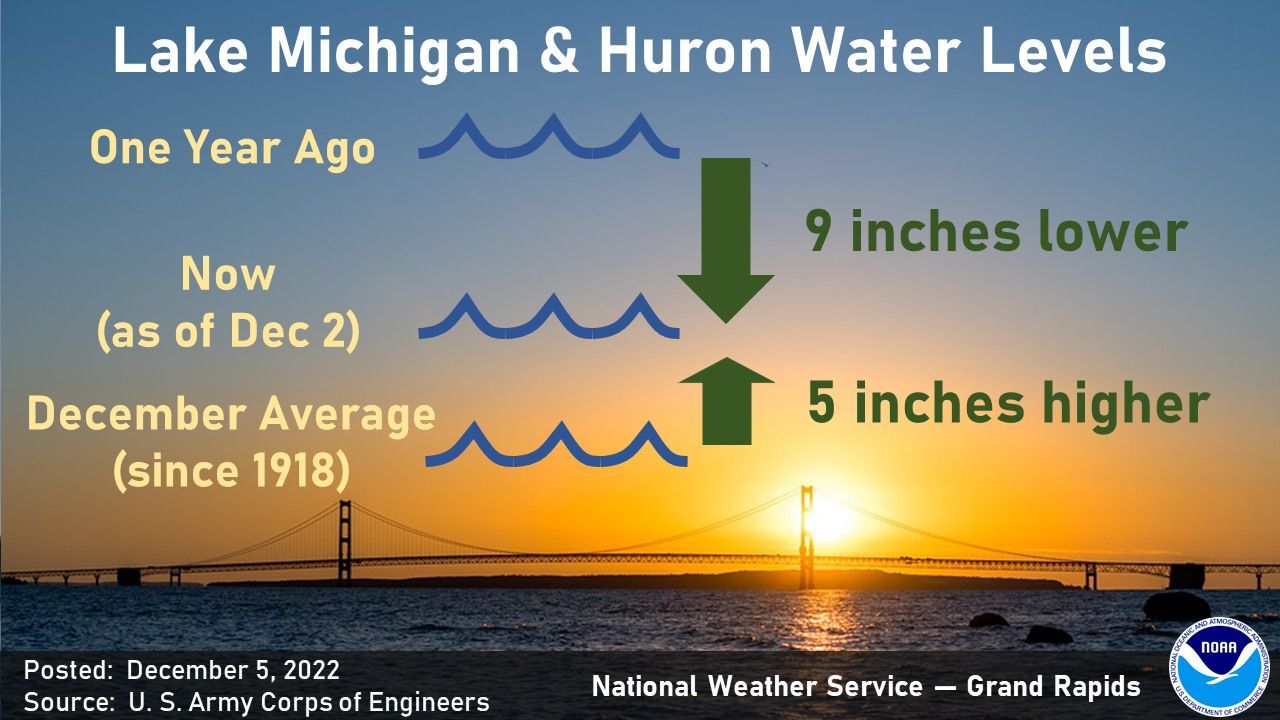
The Ups and Downs of Lake Michigan
Posted on December 9, 2022
After achieving near-record high water levels in 2020, Lakes Michigan and Huron lost more than 3 trillion gallons of water this November.
That's an eye-popping headline, isn't it? But despite that insane -sounding number (trillion with a "T?!!?"), this is not something to be anxious about. In fact, it's more of a return to the norm. It’s normal for the lakes to lose more water in November, as the rate of evaporation is typically higher than the amount of precipitation as the weather gets colder. According to the U.S. Army Corps of Engineers, this past November water levels in Lakes Michigan and Huron (which hydrologically are measured as one lake, since they are connected by free-flowing water at the Straits of Mackinac) declined by 4 inches, which amounts to 3.2 trillion gallons of water.
But more broadly, the water levels on Lakes Michigan and Huron have been on a continuous decline for the past two years, down 2 feet from its near-record high in November 2020. That puts us only about 5 inches above the long-term average.
Water levels over the past 10 years have been kind of a roller coaster- we saw record low water levels in 2012, and then a record rise over the next several years, with Lakes Michigan and Huron rising nearly 7 (!!) feet by 2020. If 4 inches equals 3.2 trillion gallons of water, how many gallons is 7 feet? Our iPhone calculator doesn’t give us that many zeros to work with. Let’s just say, it’s a LOT. So right now, though a 2-foot decline in water levels sounds alarming, we are really just coming back down to normal. Check out the drone footage of the beach just north of Grand Haven in this MLive article to get a stunning visual of the difference since 2020.




















